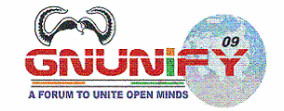The announcement in today’s Express India on new GIS software to be released by India’s Space Research Organization (ISRO) caught my eye. The article describes how ISRO’s Space Applications Centre (SAC) in partnership with Scanpoint Geomatics of Ahmedabad is all set to release a geomatics application – Indigenous GIS and IP Software (IGIS).
Express India and Scanpoint are proud to announce that this effort will result in the first Indian software package for geomatics. The application uses GIS data, images, and GPS real time information to perform satellite image processing. It runs on Unix and Windows NT.
IGIS promises to save ISRO millions of dollars in licensing fees for 3rd party geomatics software. It is also expected to help grow India’s local GIS software product industry.
Noble goals but using an old approach.
The technology architecture of IGIS, as presented on Scanpoint’s website, left me puzzled as to why a taxpayer funded project did not consider open source software as a viable model for development.
Instead IGIS seems to have been built with a proprietary product model in mind. Its software components – map explorer, image processing and GIS modules, geodata databases, map browser, and web application server – all standard fare are built with the old-fashioned assumption that IGIS can be yet another proprietary product that ISRO can somehow license and sell to others. But closed software models have rarely worked in the past for any kind of indigenous software. Also proprietary software that involves relatively standard components is extremely difficult to build in a clean room environment. So due diligence would demand a health check for IP integrity.
Why would a taxpayer funded agency such as ISRO not use the power of open source to
- Build on the shoulders of giants. ISRO can take advantage of high quality, open source technologies. It is prohibitively expensive to reach the same breadth and depth of quality through silo’ed development efforts. Using open source could provide substantial up-front savings for ISRO.
- Use collaboration methodologies. This can help grow IGIS’ developer and user communities.
- Market the software virally with the power of the internet. Once “viral marketing” establishes an interested and engaged market, the strategy of adding customized components, providing technical services and support, and even packaging can become the basis for a thriving revenue model. If ISRO or Scanpoint want to make money off this software, open source is a proven way to go. Think MySQL, Red Hat, Alfresco, Zmanda.
It is not to late for ISRO to consider this model:
- It could save ISRO tens of millions of dollars in development and licensing costs.
- It could give ISRO the ability to build a global community of developers and users.
Old habits are hard to break but closed software products are old news. Today national level government supported software projects are well advised to consider open source models to control costs, build high quality software and to realize the potential of the “indigenous” brand.





